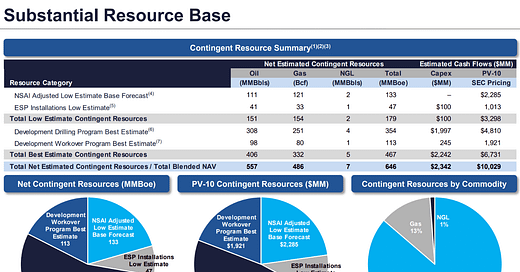Editor’s Note: I first learned about Sable Offshore from my interview with Kontrarian Korner. I had Jon take a look at it right away as I think it was a very interesting situation. Here’s the write-up.
By: Jon Costello
Sable Offshore (SOC) has received considerable attention outside the energy space after pro golfer Phil Mickelson’s X account recommended its shares as a buy. The company is navigating a thicket of state regulations, operating challenges, and financial constraints to restart production by the end of the year. If it succeeds, the upside in the shares is massive. However, risks remain, and if it fails, the company could be forced to wind down by the end of the year.
Today, SOC shares are up 30% on the news that one of its primary regulators is getting out of its way, increasing the likelihood that production will restart and ramp higher later this year.
In this article, we present the latest developments, what SOC has going for it and against it, and the upside potential in its shares. Due to the binary nature of the investment, as well as the many complexities involved, we have yet to take a view on whether the shares are a buy or not.
Background on Sable’s Santa Ynez Assets
SOC began life as a SPAC called Flame Acquisition Corp., which executed an IPO on March 1, 2021. On November 2, 2021, Flame completed a merger with Sable Offshore Holdings, LLC, and its shares began trading on the NYSE the same day.
Around the time of its de-SPAC transaction, SOC was acquiring the Santa Ynez oil field and related midstream infrastructure from ExxonMobil (XOM). The sale closed on February 14, 2024, and the entity was renamed Sable Offshore Corp.
The main Santa Ynez assets are the Hondo, Harmony, and Heritage fields off the coast of Santa Barbara County, California. The fields produced oil since offshore drilling activities expanded in the Santa Barbara Channel in the late-1960s. To minimize the risk of spills and pollution, the fields operated under stringent regulatory conditions.
In May 2015, a corroded section of the Las Flores to Gaviota Pipeline, owned by Plains All American (PAA), ruptured, causing a spill. Oil from the spill washed up on Refugio State Beach, so the spill became known as the Refugio Oil Spill. PAA puts the volume of leaked oil at 2,934 barrels, 598 of which reached the Pacific Ocean. In response to the spill, XOM shut down the pipeline and halted its Santa Ynez oil production.
The Santa Ynez assets have not been producing oil since 2015. However, XOM maintained all the equipment used for production. After various attempts to resuscitate production failed due to local and state opposition, XOM opted to sell the assets in 2022.
SOC’s Race Against Time
SOC faces various challenges in restarting production and ensuring its survival. The company is in the process of resuscitating its offshore oil and natural gas production in California. California is openly hostile to oil and gas development, and its regulators have attempted to stymie SOC's efforts.
SOC faces the additional challenge of being in a race against time. The company does not generate revenue and must make massive expenditures to boost production. In its most recently reported third quarter of 2024, its operations consumed $126 million of cash. As of November 11, it reported $363 million of cash on its balance sheet.
SOC has a $625 million term loan on which it pays 10% interest in-kind. These payments have ballooned its long-term debt balance to $814 million.
The company also faces a deadline. If it fails to restart production by January 1, 2026, XOM has the right to require SOC to reassign its producing assets to XOM without any reimbursement for its expenditures to date. XOM will become the owner of SOC’s business, and SOC will likely wind down its operations.



